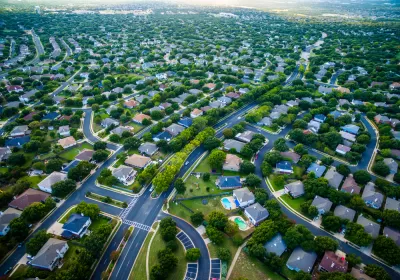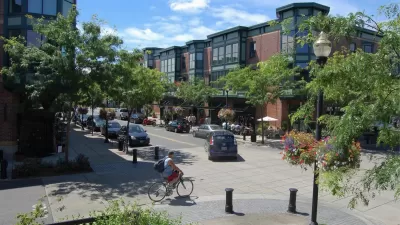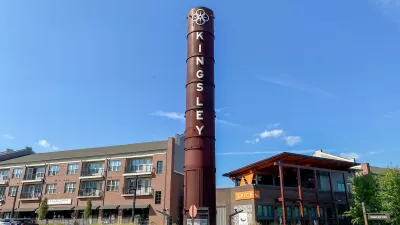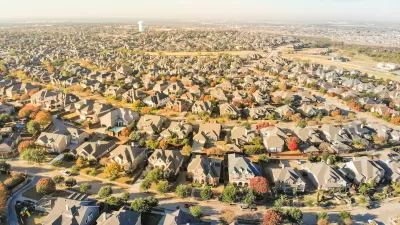With more people moving away from central cities, we have the chance to avoid past mistakes and redesign the American suburb to be less car-centric and more diverse.

What if we reinvent the suburbs to be more sustainable? That’s what Addison Del Mastro asks in a recent piece on Vox. Del Mastro argues that, with remote work changing the nature of commuting and more millennials looking to buy homes, now is the time to reenvision what suburban life could look like and write a “second draft” that’s better than the first.
“The demand for something like urban living is real. Even at the outer edges of growing metro areas, mixed-use walkable developments pop up alongside familiar subdivisions and McMansions.” Indeed, “Between 2019 and 2020, the share of millennials who live in suburbs increased by 4 percentage points; and in 2014, more than 60 percent of immigrants lived in suburbs, up from just over half in 2000.”
As Del Mastro has written before, immigrant communities are transforming the strip mall and other suburban spaces to accommodate different uses and culturally relevant services. “The ongoing diversification of the suburbs is coinciding with the appearance of New Urbanist, mixed-use development there, and the renewed interest in suburban living following the pandemic. The makings of a suburban transformation are here.”
As Del Mastro points out, “Zoning codes were not really meant to be perpetual; master plans were supposed to guide their evolution over the decades, planning for and accommodating growth.” It’s time for the suburbs to embrace change, and for planners to recognize their potential to transform into more walkable, sustainable, and diverse communities.
FULL STORY: What if the suburbs were just a first draft?

Maui's Vacation Rental Debate Turns Ugly
Verbal attacks, misinformation campaigns and fistfights plague a high-stakes debate to convert thousands of vacation rentals into long-term housing.

Planetizen Federal Action Tracker
A weekly monitor of how Trump’s orders and actions are impacting planners and planning in America.

In Urban Planning, AI Prompting Could be the New Design Thinking
Creativity has long been key to great urban design. What if we see AI as our new creative partner?

King County Supportive Housing Program Offers Hope for Unhoused Residents
The county is taking a ‘Housing First’ approach that prioritizes getting people into housing, then offering wraparound supportive services.

Researchers Use AI to Get Clearer Picture of US Housing
Analysts are using artificial intelligence to supercharge their research by allowing them to comb through data faster. Though these AI tools can be error prone, they save time and housing researchers are optimistic about the future.

Making Shared Micromobility More Inclusive
Cities and shared mobility system operators can do more to include people with disabilities in planning and operations, per a new report.
Urban Design for Planners 1: Software Tools
This six-course series explores essential urban design concepts using open source software and equips planners with the tools they need to participate fully in the urban design process.
Planning for Universal Design
Learn the tools for implementing Universal Design in planning regulations.
planning NEXT
Appalachian Highlands Housing Partners
Mpact (founded as Rail~Volution)
City of Camden Redevelopment Agency
City of Astoria
City of Portland
City of Laramie





























